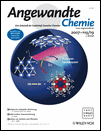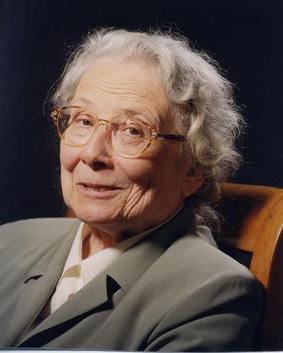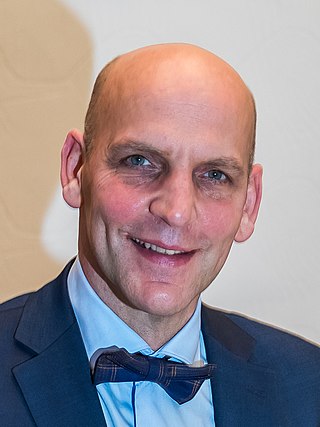
Heribert Offermanns (born October 24, 1937) is a German chemist and former member of the board of the Degussa AG.

Heribert Offermanns (born October 24, 1937) is a German chemist and former member of the board of the Degussa AG.
Offermanns was born in Merkstein. He studied chemistry at the Rheinisch-Westfälische Technische Hochschule Aachen (RWTH Aachen). He worked on his doctoral thesis as assistant to Friedrich Asinger on the border between organic and technical chemistry. After receiving his doctorate he worked afterwards on industrial chemistry and pharmaceutical research at the Degussa AG and at Degussa Antwerpen NV and Degussa Inc., New York. In 1976 Offermanns was appointed as member of the management board of Degussa AG with the responsibility for research and development. Offermanns remained a member of the board until 2000. He managed the development and expansion of Degussa's research center in Hanau-Wolfgang.
Heribert Offermanns was the president of the German Chemical Society and a member of the Senate of the German Research Foundation (DFG). He was also a member of the board of Johann Wolfgang Goethe-University in Frankfurt and the University of Regensburg. Offermanns was board member of the Paul Ehrlich Foundation and chairman of the board of trustees of the Max-Planck-Institute for Solid State Research, Stuttgart. Since 1988 he was Honorary Professor at the Johann Wolfgang Goethe University in Frankfurt. Heribert Offermanns has published numerous scientific papers on sulfur chemistry and on the production and use of hydrogen peroxide, he holds also several patents.

Richard Adolf Zsigmondy was an Austrian-born chemist. He was known for his research in colloids, for which he was awarded the Nobel Prize in chemistry in 1925, as well as for co-inventing the slit-ultramicroscope, and different membrane filters. The crater Zsigmondy on the Moon is named in his honour.

Angewandte Chemie is a weekly peer-reviewed scientific journal that is published by Wiley-VCH on behalf of the German Chemical Society. Publishing formats include feature-length reviews, short highlights, research communications, minireviews, essays, book reviews, meeting reviews, correspondences, corrections, and obituaries. This journal contains review articles covering all aspects of chemistry. According to the Journal Citation Reports, the journal had a 2021 impact factor of 16.823.
The Reed reaction is a chemical reaction that utilizes light to oxidize hydrocarbons to alkylsulfonyl chlorides. This reaction is employed in modifying polyethylene to give chlorosulfonated polyethylene (CSPE), which is noted for its toughness.

Wilhelm Keim was a German chemist and professor of chemistry at the Technical Chemistry and former director of the Institute for Technical and Petrol Chemistry at RWTH Aachen in Germany.
The Asinger-reaction is a multicomponent reaction for the synthesis of 3-thiazolines and other related heterocycles. It is named after Friedrich Asinger who first reported it in 1956.

Friedrich Asinger was an Austrian chemist and professor for Technical Chemistry. He is well known for his development of a multi-component reaction, the Asinger reaction for the synthesis of 3-thiazolines.
Bernd Giese is a German chemist and guest professor in chemistry at the University of Fribourg in Fribourg, Switzerland since 2010.

Wilhelm Alfons Schuler was a chemist, inventor and entrepreneur in the second half of the 20th century.
Wolfgang Kaim is a German chemist who held the chair of coordination chemistry at the University of Stuttgart. He is co-author of the internationally recognized book, Bioinorganic Chemistry which was awarded with the Literature Award of the German Chemical Industry.

Hans-Ulrich Reissig is a German chemist and was a full professor of Organic Chemistry at FU Berlin.
Werner Zerweck was a German chemist, inventor and industrial leader, who served as CEO of the chemical and pharmaceutical company Cassella from 1953 to 1963. Under his leadership the company focused increasingly on pharmaceuticals and cosmetics rather than its former primary focus, dyes. He was also a member of the advisory board of Deutsche Bank from 1953. Zerweck was a pioneer in the development of synthetic fibers.

Margot Becke-Goehring was a Professor of Inorganic Chemistry at the University of Heidelberg and she was the first female rector of a university in West Germany - the Heidelberg University. She was also the director of the Gmelin Institute of Inorganic Chemistry of the Max Planck Society that edited the Gmelins Handbuch der anorganischen Chemie. She studied Chemistry in Halle (Saale) and Munich, and she finished her doctorate and habilitation at the University of Halle. For her research on the chemistry of main-group elements, she was awarded Alfred Stock Memorial Prize. One of her most notable contributions to inorganic chemistry was her work on the synthesis and structure of poly(sulfur nitride), which was later discovered to be the first non-metallic superconductor. For her success in editing the Gmelins Handbuch der anorganischen Chemie, she received the Gmelin-Beilstein memorial coin.
Richard Dronskowski is a German chemist and physicist. He is a full professor at the RWTH Aachen University.

Maria Lipp was a German organic chemist. She was the first female doctoral student, professor, and ordinary professor at the RWTH Aachen University.
Emma Maria Wolffhardt was a German Industrial Chemist at BASF and she was the first women chemist at BASF who had her own research area. Furthermore, she was the first to use the calotte model for understanding and improving organic synthesis.
The telluride iodides are chemical compounds that contain both telluride ions (Te2−) and iodide ions (I−). They are in the class of mixed anion compounds or chalcogenide halides.
Walter Leitner is a German chemist, the director of the Max Planck Institute for Chemical Energy Conversion heading the department "Molecular Catalysis" as well as a university lecturer at the RWTH Aachen University, where he holds the position of chair for technical chemistry and petrochemistry.

Regina Palkovits is a German chemist who is a Professor of Chemistry at the RWTH Aachen University. Her research considers heterogenous catalysis. She was elected a Fellow of the North Rhine-Westphalian Academy of Sciences, Humanities and the Arts in 2020.

Benjamin List is a German chemist who is one of the directors of the Max Planck Institute for Coal Research and professor of organic chemistry at the University of Cologne. He co-developed organocatalysis, a method of accelerating chemical reactions and making them more efficient. He shared the 2021 Nobel Prize in Chemistry with David MacMillan "for the development of asymmetric organocatalysis".
René Peters is a German chemist and since 2008 Professor of Organic Chemistry at the University of Stuttgart.